- Home
- J. K. Rowling
Hogwarts: An Incomplete and Unreliable Guide Page 3
Hogwarts: An Incomplete and Unreliable Guide Read online
Page 3
This is just one example of the ways in which, when writing fantasy novels, one must be careful what one invents. For every benefit, there is usually a drawback.
It isn’t just students and teachers who live at the school. Hogwarts is home to many others aside from the living – and these spirits have nothing but time. Among Hogwarts’ permanent residents are a colourful collection of otherworldly inhabitants.
HOGWARTS GHOSTS
BY J.K. ROWLING
In spite of the unfounded rumours surrounding the Shrieking Shack, which was never haunted at all, Hogwarts is the most heavily haunted dwelling place in Britain (and this is against stiff competition, as there are more reported ghost sightings/sensings on these damp islands than anywhere else in the world). The castle is a congenial place for ghosts, because the living inhabitants treat their dead friends with tolerance and even affection, no matter how many times they have heard the same old reminiscences.
Each of the four Hogwarts houses has its own ghost. Slytherin boasts the Bloody Baron, who is covered in silver bloodstains. The least talkative of the house ghosts is the Grey Lady, who is long-haired and beautiful.
Hufflepuff House is haunted by the Fat Friar, who was executed because senior churchmen grew suspicious of his ability to cure the pox merely by poking peasants with a stick, and his ill-advised habit of pulling rabbits out of the communion cup. Though a genial character in general, the Fat Friar still resents the fact that he was never made a cardinal.
Gryffindor house is home to Nearly Headless Nick, who in life was Sir Nicholas de Mimsy-Porpington. Something of a snob, and a less accomplished wizard than he believed, Sir Nicholas lounged around the court of Henry VII in life, until his foolish attempt to beautify a lady-in-waiting by magic caused the unfortunate woman to sprout tusks. Sir Nicholas was stripped of his wand and inexpertly executed, leaving his head hanging off by a single flap of skin and sinew. He retains a feeling of inadequacy with regard to truly headless ghosts.
Another notable Hogwarts ghost is Moaning Myrtle, who haunts an unpopular girls’ toilet. Myrtle was a student at Hogwarts when she died, and she chose to return to school in perpetuity, with the short-term aim of haunting her arch-rival and bully, Olive Hornby. As the decades have rolled by, Myrtle has made a name for herself as the most miserable ghost in school, usually to be found lurking inside one of the toilets and filling the tiled space with her moans and howls.
J.K. Rowling’s thoughts
The inspiration for Moaning Myrtle was the frequent presence of a crying girl in communal bathrooms, especially at the parties and discos of my youth. This does not seem to happen in male bathrooms, so I enjoyed placing Harry and Ron in such uncomfortable and unfamiliar territory in Harry Potter and the Chamber of Secrets and Harry Potter and the Half-Blood Prince.
The most productive ghost at Hogwarts is, of course, Professor Binns, the old History of Magic teacher who fell asleep in front of the staff-room fire one day and simply got up to give his next class, leaving his body behind. There is some debate as to whether or not Professor Binns realises he is dead. While his entrance to lessons through the blackboard is vaguely amusing the first time students see it, he is not the most stimulating teacher.
The inspiration for Professor Binns was an old professor at my university, who gave every lecture with his eyes closed, rocking backwards and forwards slightly on his toes. While he was a brilliant man, who disgorged an immense amount of valuable information at every lecture, his disconnect with his students was total. Professor Binns is only dimly aware of his living students, and is astonished when they begin asking him questions.
In the very earliest list of ghosts I ever wrote for Hogwarts, I included Myrtle (initially named ‘Wailing Wanda’), Professor Binns, the Grey Lady (then called ‘the Whispering Lady’) and the Bloody Baron. There was also a Black Knight, The Toad (which left ectoplasm all over its classroom), and a ghost I rather regret not using: his name was Edmund Grubb, and the notes beside his name say: Expired in the doorway of the Dining Hall. Sometimes stops people getting in, out of spite. Fat Victorian ghost. (Ate poisonous berries).
Ghosts are such a normal sight to behold at Hogwarts that it’s easy to forget you don’t often see them out in the Muggle world. Of course, there’s a good explanation for that.
GHOSTS
BY J.K. ROWLING
In the world of Harry Potter, a ghost is the transparent, three-dimensional imprint of a deceased witch or wizard, which continues to exist in the mortal world. Muggles cannot come back as ghosts, and the wisest witches and wizards choose not to. It is those with ‘unfinished business’, whether in the form of fear, guilt, regrets or overt attachment to the material world, who refuse to move on to the next dimension.
Having chosen a feeble simulacrum of mortal life, ghosts are limited in what they can experience. No physical pleasure remains to them, and their knowledge and outlook remains at the level it had attained during life, so that old resentments (for instance, at having an incompletely severed neck) continue to rankle after several centuries. For this reason, ghosts tend to be poor company, on the whole. They are especially disappointing on the one subject that fascinates most people: ghosts cannot return a very sensible answer on what it is like to die, because they have chosen an impoverished version of life instead.
Ghosts can pass through solid objects without causing damage to themselves or the material, but create disturbances in water, fire and air. The temperature drops in the immediate vicinity of a ghost, an effect intensified if many congregate in the same place. Their appearance can also turn flames blue. Should part or all of a ghost pass through a living creature, the latter will experience a freezing sensation as though they have been plunged into ice-cold water.
Witches and wizards are much more susceptible to what Muggles call paranormal activity, and will see (and hear) ghosts plainly, where a Muggle might only feel that a haunted place is cold or ‘creepy’. Muggles who insist that they see ghosts in perfect focus are either a) lying or b) wizards showing off – and in flagrant breach of the International Statute of Secrecy.
The circumstances around Nearly Headless Nick’s botched beheading were never explained in the Harry Potter series, but they’re a mystery no longer. You’ll find out exactly what happened to the aggrieved ghost (straight from Nick himself) in the following ballad, which was axed from an early draft of Harry Potter and the Chamber of Secrets.
THE BALLAD OF NEARLY HEADLESS NICK
BY J.K. ROWLING
It was a mistake any wizard could make
Who was tired and caught on the hop
One piffling error, and then, to my terror,
I found myself facing the chop.
Alas for the eve when I met Lady Grieve
A-strolling the park in the dusk!
She was of the belief I could straighten her teeth
Next moment she’d sprouted a tusk.
I cried through the night that I’d soon put her right
But the process of justice was lax;
They’d brought out the block, though they’d mislaid the rock
Where they usually sharpened the axe.
Next morning at dawn, with a face most forlorn,
The priest said to try not to cry,
‘You can come just like that, no, you won’t need a hat,’
And I knew that my end must be nigh.
The man in the mask who would have the sad task
Of cleaving my head from my neck,
Said ‘Nick, if you please, will you get to your knees,’
And I turned to a gibbering wreck.
‘This may sting a bit’ said the cack-handed twit
As he swung the axe up in the air,
But oh the blunt blade! No difference it made,
My head was still definitely there.
The axeman he hacked and he whacked and he thwacked,
&
nbsp; ‘Won’t be too long’, he assured me,
But quick it was not, and the bone-headed clot
Took forty-five goes ’til he floored me.
And so I was dead, but my faithful old head
It never saw fit to desert me,
It still lingers on, that’s the end of my song,
And now, please applaud, or you’ll hurt me.
Nearly Headless Nick and Moaning Myrtle aren’t the only permanent residents of Hogwarts. The castle walls are lined with portraits whose subjects can move, speak and interact with students – including the Fat Lady, who guards the entrance to Gryffindor Tower, and the many previous headmasters who are more than ready to offer advice to their successors.
HOGWARTS PORTRAITS
BY J.K. ROWLING
Hogwarts portraits are able to talk and move around from picture to picture. They behave like their subjects. However, the degree to which they can interact with the people looking at them depends not on the skill of the painter, but on the power of the witch or wizard painted.
When a magical portrait is taken, the witch or wizard artist will naturally use enchantments to ensure that the painting will be able to move in the usual way. The portrait will be able to use some of the subject’s favourite phrases and imitate their general demeanour. Thus, Sir Cadogan’s portrait is forever challenging people to a fight, falling off its horse and behaving in a fairly unbalanced way, which is how the subject appeared to the poor wizard who had to paint him, while the portrait of the Fat Lady continues to indulge her love of good food, drink and tip-top security long after her living model passed away.
However, neither of these portraits would be capable of having a particularly in-depth discussion about more complex aspects of their lives: they are literally and metaphorically two-dimensional. They are only representations of the living subjects as seen by the artist.
Some magical portraits are capable of considerably more interaction with the living world. Traditionally, a headmaster or headmistress is painted before their death. Once the portrait is completed, the headmaster or headmistress in question keeps it under lock and key, regularly visiting it in its cupboard (if so desired) to teach it to act and behave exactly like themselves, and imparting all kinds of useful memories and pieces of knowledge that may then be shared through the centuries with their successors in office.
The depth of knowledge and insight contained in some of the headmasters’ and headmistresses’ portraits is unknown to any but the incumbents of the office and the few students who have realised, over the centuries, that the portraits’ apparent sleepiness when visitors arrive in the office is not necessarily genuine.
Perhaps the most outspoken portrait to grace the castle walls is Sir Cadogan, who Harry, Ron and Hermione encountered in their third year at Hogwarts. Often seen chasing after his fat pony, Sir Cadogan is a boastful knight who challenges passers-by to duels whenever he is given the opportunity. Legend has it that Sir Cadogan was as brash and brave in life as he appears to be in his portrait.
SIR CADOGAN
BY J.K. ROWLING
BIRTHDAY:
Unknown
WAND:
(According to legend) Blackthorn and troll whisker, nine inches, combustible
HOGWARTS HOUSE:
Gryffindor
SPECIAL ABILITIES:
Insane bravery
PARENTAGE:
Wizard father, witch mother
FAMILY:
Three wives are believed to have left him, rumoured to have had seventeen known children
Before the wizarding community was forced into hiding, it was not unusual for a wizard to live in the Muggle community and hold down what we would now think of as a Muggle job.
It is widely believed in wizarding circles that Sir Cadogan was one of the famous Knights of the Round Table, albeit a little-known one, and that he achieved this position through his friendship with Merlin. He has certainly been excised from all Muggle volumes of King Arthur’s story, but wizarding versions of the tales include Sir Cadogan alongside Sir Lancelot, Sir Bedivere and Sir Percivale. These tales reveal him to be hot-headed and peppery, and brave to the point of foolhardiness, but a good man in a corner.
Sir Cadogan’s most famous encounter was with the Wyvern of Wye, a dragonish creature that was terrorizing the West Country. At their first encounter, the beast ate Sir Cadogan’s handsome steed, bit his wand in half and melted his sword and visor. Unable to see through the steam rising from his melting helmet, Sir Cadogan barely escaped with his life. However, rather than running away, he staggered into a nearby meadow, grabbed a small, fat pony grazing there, leapt upon it and galloped back towards the wyvern with nothing but his broken wand in his hand, prepared to meet a valiant death. The creature lowered its fearsome head to swallow Sir Cadogan and the pony whole, but the splintered and misfiring wand

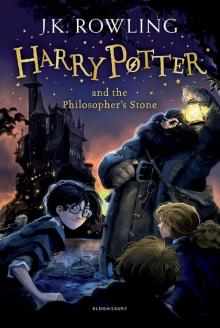 Harry Potter and the Philosophers Stone
Harry Potter and the Philosophers Stone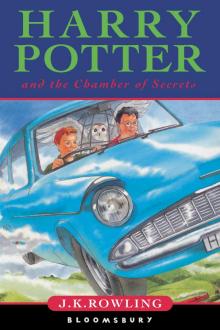 Harry Potter and the Chamber of Secrets
Harry Potter and the Chamber of Secrets Harry Potter and the Goblet of Fire
Harry Potter and the Goblet of Fire Harry Potter and the Deathly Hallows
Harry Potter and the Deathly Hallows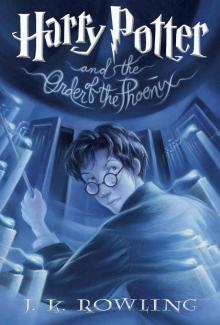 Harry Potter and the Order of the Phoenix
Harry Potter and the Order of the Phoenix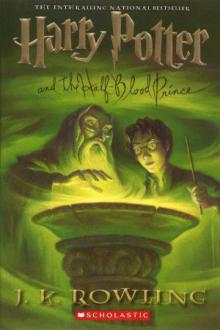 Harry Potter and the Half-Blood Prince
Harry Potter and the Half-Blood Prince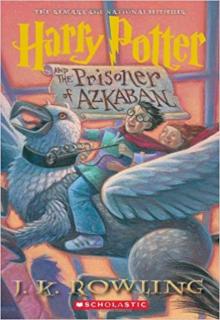 Harry Potter and the Prisoner of Azkaban
Harry Potter and the Prisoner of Azkaban Fantastic Beasts and Where to Find Them
Fantastic Beasts and Where to Find Them Short Stories from Hogwarts of Heroism, Hardship and Dangerous Hobbies
Short Stories from Hogwarts of Heroism, Hardship and Dangerous Hobbies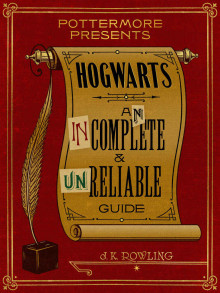 Hogwarts: An Incomplete and Unreliable Guide
Hogwarts: An Incomplete and Unreliable Guide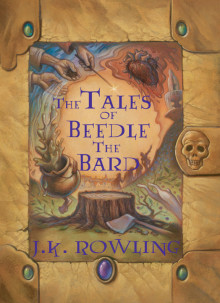 The Tales of Beedle the Bard
The Tales of Beedle the Bard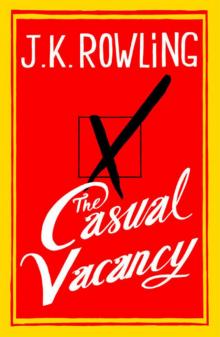 The Casual Vacancy
The Casual Vacancy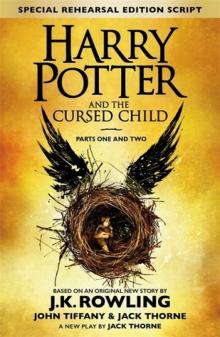 Harry Potter and the Cursed Child
Harry Potter and the Cursed Child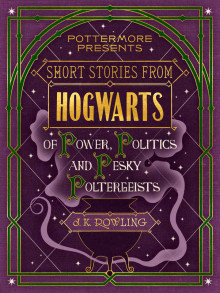 Short Stories from Hogwarts of Power, Politics and Pesky Poltergeists
Short Stories from Hogwarts of Power, Politics and Pesky Poltergeists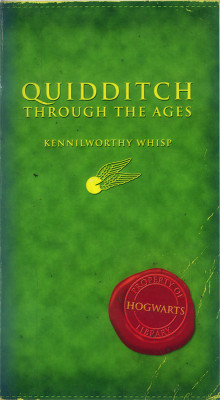 Quidditch Through the Ages
Quidditch Through the Ages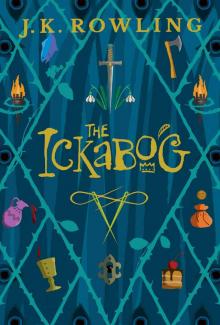 The Ickabog
The Ickabog![Fantastic Beasts, The Crimes of Grindelwald [UK] Read online](http://i1.bookreadfree.com/i/03/19/fantastic_beasts_the_crimes_of_grindelwald_uk_preview.jpg) Fantastic Beasts, The Crimes of Grindelwald [UK]
Fantastic Beasts, The Crimes of Grindelwald [UK]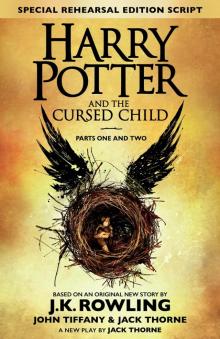 Harry Potter and the Cursed Child: Parts One and Two
Harry Potter and the Cursed Child: Parts One and Two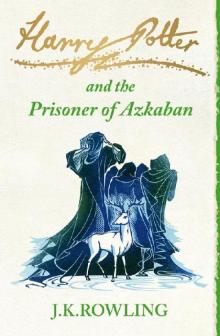 The Prisoner of Azkaban
The Prisoner of Azkaban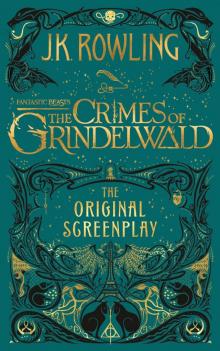 Fantastic Beasts: The Crimes of Grindelwald
Fantastic Beasts: The Crimes of Grindelwald The Hogwarts Library Collection
The Hogwarts Library Collection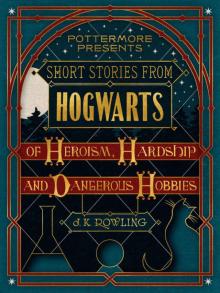 Short Stories from Hogwarts of Heroism, Hardship and Dangerous Hobbies (Kindle Single) (Pottermore Presents)
Short Stories from Hogwarts of Heroism, Hardship and Dangerous Hobbies (Kindle Single) (Pottermore Presents)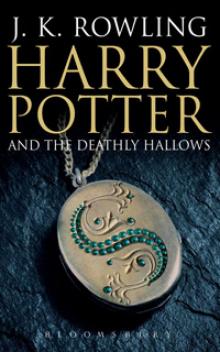 Harry Potter and the Deathly Hallows hp-7
Harry Potter and the Deathly Hallows hp-7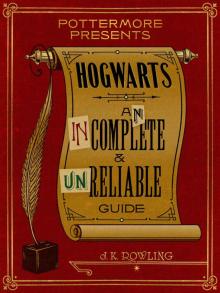 Hogwarts: An Incomplete and Unreliable Guide (Kindle Single) (Pottermore Presents)
Hogwarts: An Incomplete and Unreliable Guide (Kindle Single) (Pottermore Presents)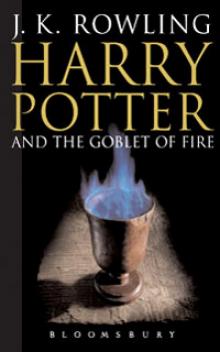 Harry Potter and the Goblet of Fire hp-4
Harry Potter and the Goblet of Fire hp-4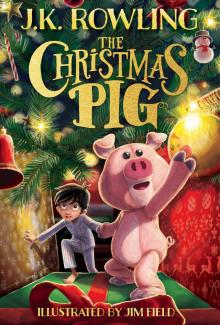 The Christmas Pig
The Christmas Pig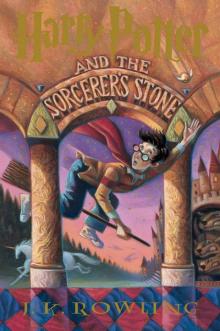 Harry Potter and the Sorcerer's Stone
Harry Potter and the Sorcerer's Stone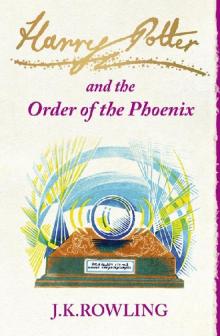 The Order of the Phoenix
The Order of the Phoenix Harry Potter and the Prisoner of Azkaban hp-3
Harry Potter and the Prisoner of Azkaban hp-3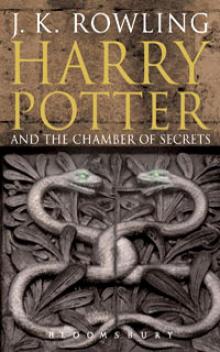 Harry Potter and the Chamber of Secrets hp-2
Harry Potter and the Chamber of Secrets hp-2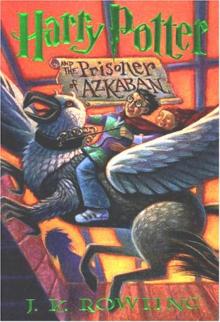 HP 3 - Harry Potter and the Prisoner of Azkaban
HP 3 - Harry Potter and the Prisoner of Azkaban The Half-Blood Prince
The Half-Blood Prince The Hogwarts Collection
The Hogwarts Collection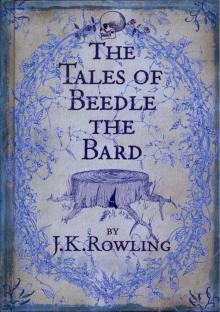 Tales of Beedle the Bard
Tales of Beedle the Bard The Goblet of Fire
The Goblet of Fire Harry Potter and the Half-Blood Prince hp-6
Harry Potter and the Half-Blood Prince hp-6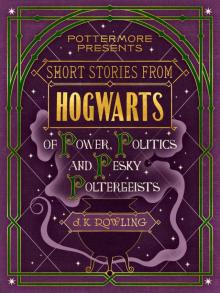 Short Stories from Hogwarts of Power, Politics and Pesky Poltergeists (Kindle Single) (Pottermore Presents)
Short Stories from Hogwarts of Power, Politics and Pesky Poltergeists (Kindle Single) (Pottermore Presents)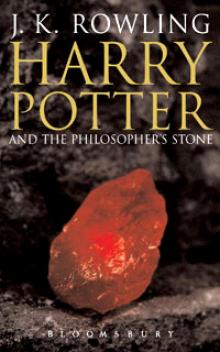 Harry Potter and the Sorcerer's Stone hp-1
Harry Potter and the Sorcerer's Stone hp-1